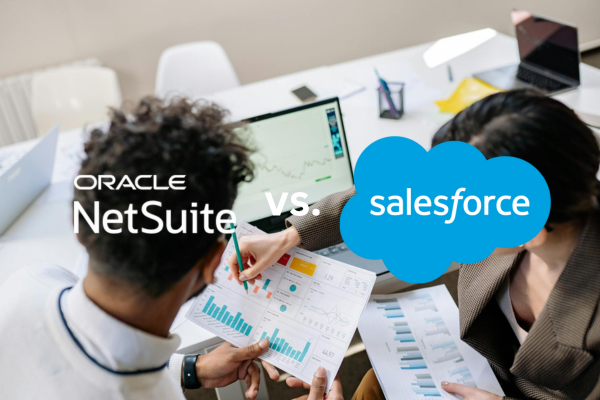The American healthcare sector is undeniably complex and extensive. Today, the industry contributes a whopping 20% of the nation’s GDP, encompasses over 900,000 organizations, and supports no fewer than 20 million employees. All are committed to furthering one goal: improving the country’s collective health and wellbeing. But doing so is easier said than done, especially given the sheer complexity of the American healthcare system and the difficulties inherent to serving patients at scale. Simply achieving visibility into one beneficiary’s health experience can be challenging enough — and providing exceptional care to many, even more so.
There’s no doubt that healthcare organizations face a broad host of challenges today. From ever-shifting compliance regulations to increasing demand for services and interoperability challenges, there are countless factors that complicate daily operations for payers and providers alike. Organizations in the sector need practical support — and Salesforce Health Cloud can provide it.
Launched by Salesforce in 2015, Health Cloud is a customer relationship management (CRM) solution designed specifically to help organizations in the healthcare and life sciences overcome daily operational challenges and deliver better experiences at scale. In this blog, we’ll unpack the product by considering what it does and how it can provide crucial support to payers and providers.
What is Salesforce Health Cloud?
The healthcare and life sciences sector has a reputation for being slow to embrace systems innovation; as a memorable example, a whopping 90% of healthcare organizations still relied on fax machines as of 2020. Health Cloud seeks to break that mold by empowering its industry users to achieve more with data and automation tools. Salesforce developed the product in partnership with industry-leading companies such as Centura Health, UCSF, and Radboud University Medical Center, using its own tried-and-true Service Cloud as the foundation for the sector-specific solution.
As Salesforce’s representatives described in a press release ahead of Health Cloud’s 2015 launch, “Salesforce Health Cloud is a cloud-based patient relationship management solution that enables providers to gain a complete view of the patient with integrated data from electronic medical records (EMRs), wearables and more; make smarter care decisions; engage with patients across their caregiver networks; and manage patient data.”
Once equipped with Health Cloud, payers and providers can achieve unprecedented visibility into their patients’ and beneficiaries’ unique health needs, care journey, and past experiences. The tool also provides critical collaborative functionality to make it easier for care organizations to collaborate and share information without breaking compliance or compromising privacy. This interoperability ensures that permissioned users can access a comprehensive, 360-degree view of each beneficiary at a moment’s notice.
Health Cloud provides transformative value to organizations across the healthcare and life sciences sector — however, it’s also worth noting that the solution also provides individual advantages for those in both the payer and the provider fields, enabling them to deliver top-tier healthcare experiences at scale.
How Salesforce Health Cloud helps payers
For those in the insurance sector, Health Cloud offers a variety of benefits to improve member interactions and lower costs. Health Cloud’s functionalities fall into two major categories: improving the patient experience and facilitating more streamlined internal operations. With Health Cloud, payers can coordinate complex processes, empower healthcare professionals to achieve better efficiency, and gain greater insight into their members’ needs, ultimately elevating their experience.
Some of the ways Health Cloud helps payers improve on member experiences include:
- Automating lengthy processes: With Health Cloud, many of the most time-consuming processes in the insurance world, such as claim intakes, are fully automated. This allows employees to spend more time attending to beneficiaries.
- Managing processes and access patient information: Health Cloud’s Care Request feature enables payers to manage processes like prescription preauthorizations, service preauthorizations, and admissions review, allowing each stakeholder to access the patient data they need to adjudicate care utilization requests.
- Managing provider claim denials, appeals, and grievances: Payers use Health Cloud to oversee the claims process and keep patients and providers up-to-date on claim statuses, especially when claims are denied or under appeal.
- Simplifying the call center experience: Health Cloud completely integrates call center systems, providing representatives with a 360-degree view of members in one location – no more flipping between screens and tabs to track down every piece of information. With a more streamlined call center workflow, calls take up less time and thus allow representatives to help more customers in a day.
- Creating an omnichannel outreach platform: Members can contact their providers through various channels from email to text to e-chat, making it easier for them to get assistance through their preferred means of communication.
Ultimately, insurance companies exist to help their members receive the best quality care while reducing financial financial burden. With Health Cloud, this process becomes easier and more efficient to manage.
How Salesforce Health Cloud helps providers
For healthcare providers looking toward digital transformation, Health Cloud provides plenty of tools to cultivate more robust relationships with patients and deliver personalized, patient-centered experiences. The platform takes away the need for providers to manually enter patient data and reduces administrator workload, meaning providers can spend more time doing what matters most: helping patients.
Some of the ways Health Cloud helps providers improve member experiences include:
- Journey Mapping: All members of a patient’s care team are able to utilize Health Cloud’s patient journey map tool, which integrates data from sources like Electronic Health Records (EHRs) and wearable devices and automatically updates to ensure the most up-to-date picture of a patient’s health history, complete with current and former medications, doctors and specialists, and communication preferences.
- Boosting productivity by prioritizing tasks: Health Cloud’s “Today” page allows providers to view their tasks sorted by level of importance; providers can also organize and group patients into categories and set tasks based on patient groups.
- Fostering interactions between different members of a patient's care team: Health Cloud creates a map of a patient’s entire personal and professional support network, allowing individuals within that network to communicate and collaborate to aid in a patient’s care.
Just as it does for payers, Health Cloud improves provider workflow, ultimately enabling them to provide optimal care to their patients.
Ready to find out if Health Cloud is right for your organization? Contact us today!
If you are interested in learning more about Health Cloud and how it can help your organization, contact us today. Our Healthcare and Life Sciences team has decades of combined experience in both the payer and provider sectors, and they know what it takes to provide the best experiences possible for patients and enrollees. We would be happy to guide your organization as it undergoes the digitalization process.










